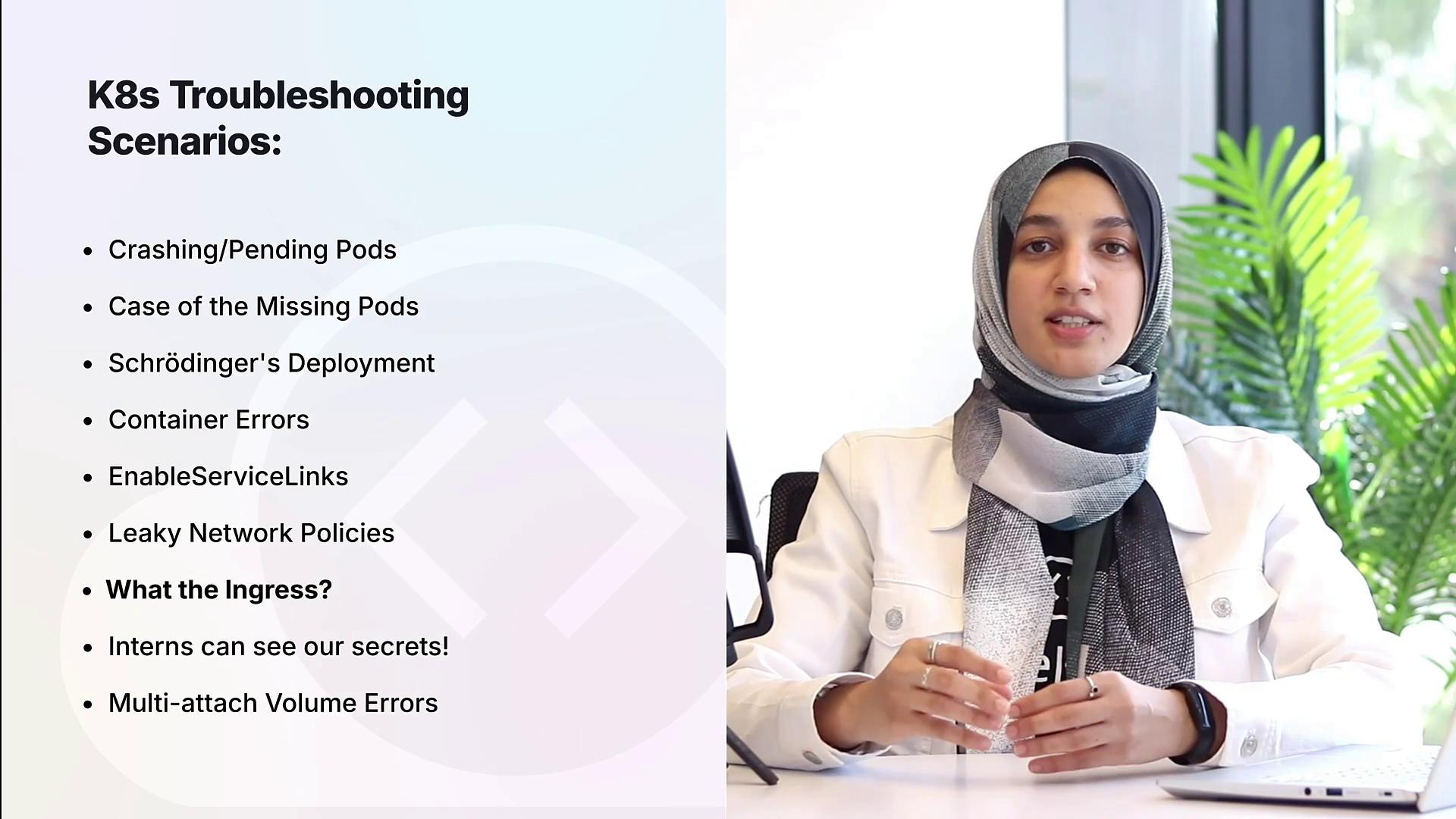Kubernetes Troubleshooting for Application Developers
Introduction
Course Introduction
Welcome to Kubernetes Troubleshooting for Application Developers! I'm Nourhan Khaled, your instructor for this course.
Learning Kubernetes from tutorials is one thing, but deploying a production application introduces a unique set of challenges that often feel like you're constantly putting out fires. This lesson bridges the gap between theory and practice—the very course I wish I had during those frustrating debugging sessions.
Prerequisites
Ensure you have a basic understanding of Kubernetes resources such as pods, deployments, services, storage, and network policies before you begin.
Course Overview
We start with a concise refresher on essential kubectl commands for troubleshooting common Kubernetes errors. Then, the course dives into real-world scenarios that mirror the challenges you may face in production environments. You’ll learn how to inspect resources, identify failures, and apply fixes in a structured and repeatable way.
Hands-On Troubleshooting
This course stands out because you'll troubleshoot and resolve issues in real time—exactly as I do in my day-to-day work. We’ll cover pod configuration errors, deployment rollouts, container image problems, and more, guiding you through each step with clear explanations and best practices.
Real-World Scenarios
Throughout the lesson, you will explore a range of troubleshooting challenges including:
- Pod configuration errors
- Deployment and rollout issues
- Container settings and image pull problems
- Networking challenges such as service misconfigurations, network policies, and ingress troubleshooting
- Diagnosing RBAC and storage-related issues
Important
Always test changes in a controlled environment before applying fixes to production. Insufficient testing can lead to unexpected disruptions.
Hands-On Labs
Like all KodeKloud courses, this lesson features multiple hands-on labs. These browser-based labs enable you to immediately apply the troubleshooting techniques you learn, ensuring you gain practical, real-world experience.
If you're ready for a challenge, enroll now and start mastering Kubernetes troubleshooting!

Watch Video
Watch video content